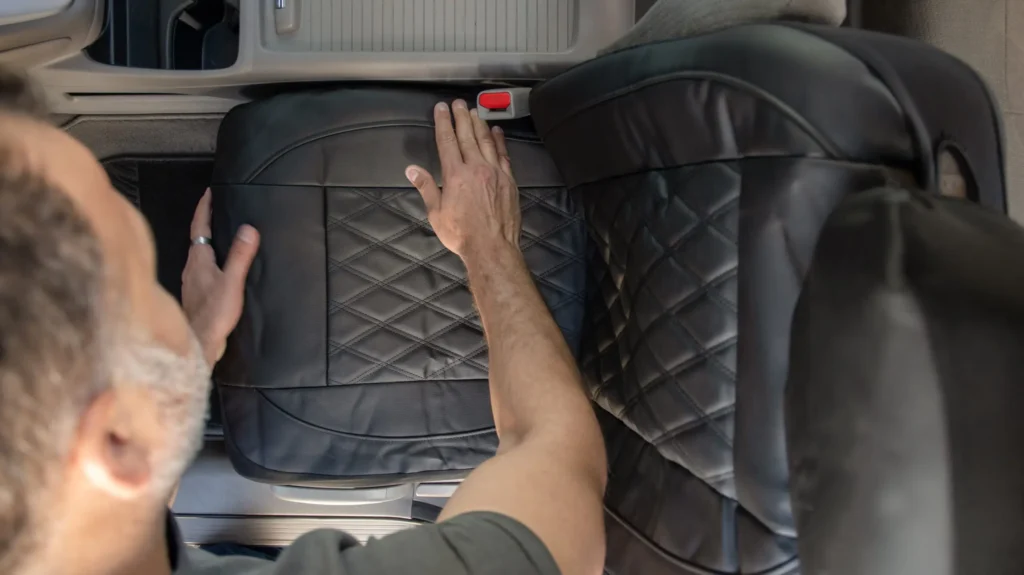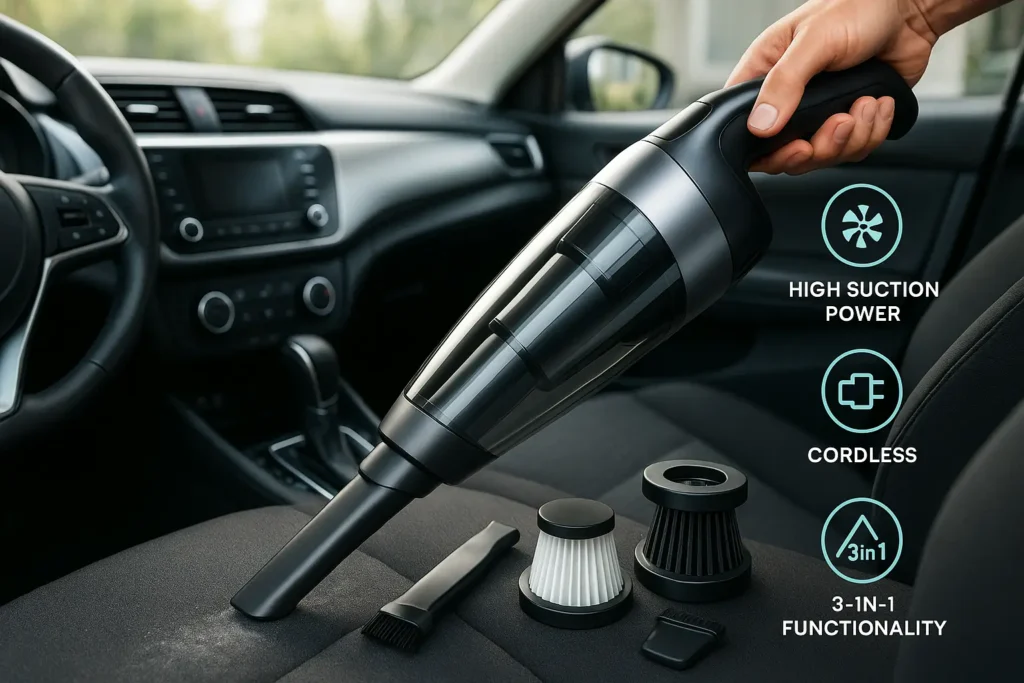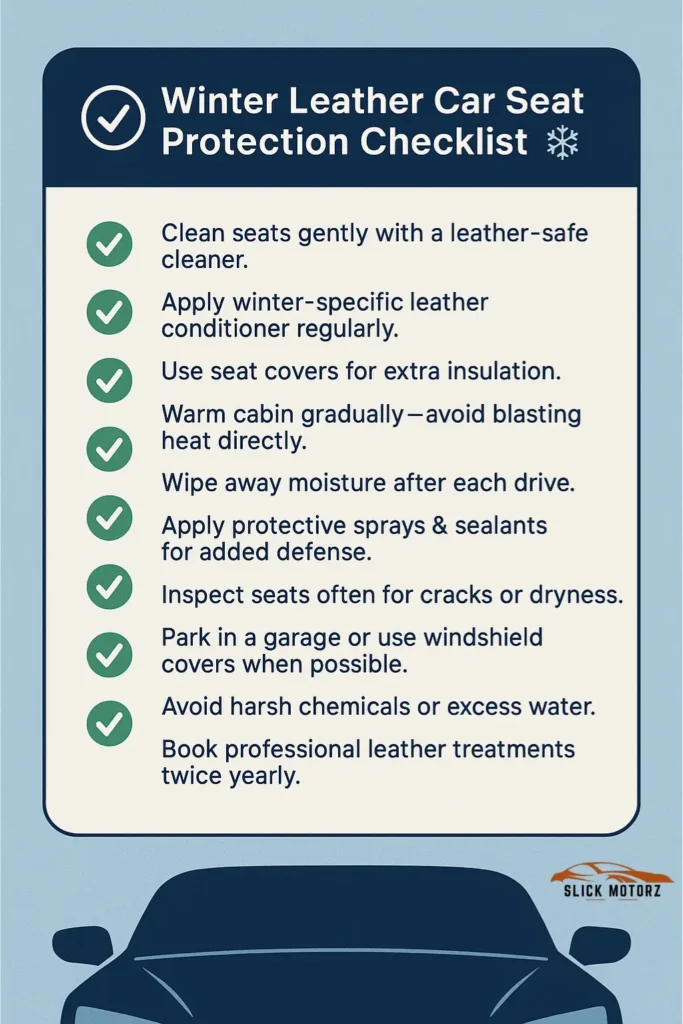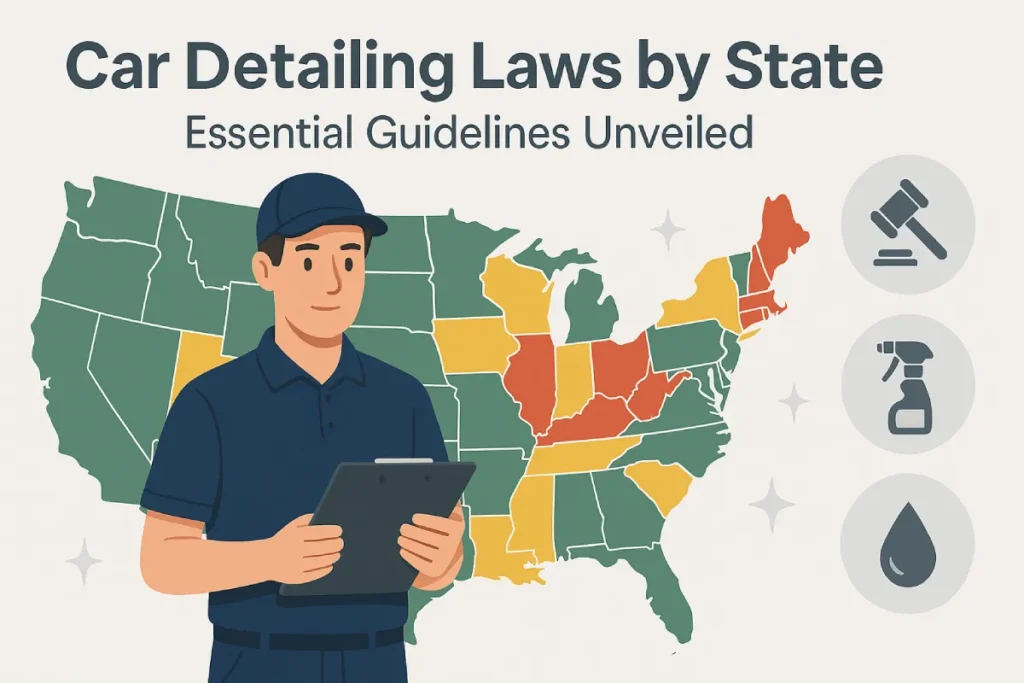Your leather car seats face a tough enemy when the temperature drops. Extreme cold can cause cracking, stiffness, and fading that damage your seats over time.
But you don’t have to watch your investment wear down. By taking a few simple steps, you can keep your leather looking smooth and fresh throughout the entire winter season. You’ll discover practical tips that protect leather car seats in extreme cold and keep your car’s interior feeling warm and comfortable.
Please keep reading to learn how to shield your leather and extend its life through the coldest months.

Credit: www.autozone.com
Effects Of Cold On Leather Seats
Cold weather affects leather car seats in many ways. Leather reacts to low temperatures by losing moisture. This makes the surface dry and less flexible. Over time, this damage becomes visible and can reduce the seat’s lifespan.
Understanding these effects helps in protecting your leather seats better. Taking simple steps can keep the leather soft and strong during the winter months.
Leather Cracking And Drying
Cold air removes natural oils from leather. Without these oils, leather becomes dry and stiff. Dry leather cracks easily when bent or stretched. Cracks weaken the leather and spoil the look of car seats. Once cracked, leather is harder to fix and may need replacement.
Leather needs moisture to stay soft. Extreme cold speeds up the drying process. Leaving leather seats exposed to cold air increases damage risk. Protecting leather from cold helps keep it smooth and crack-free.
Impact On Seat Comfort
Leather becomes hard and cold to sit on in winter. This makes driving less comfortable. Stiff leather does not adjust well to body shape. It may cause discomfort on long drives.
Cold leather also feels slippery. This can reduce seat grip and safety. Warm leather feels soft and inviting. Keeping leather seats warm improves comfort and the driving experience.

Pre-drive Preparations
Preparing your leather car seats before driving in extreme cold helps keep them safe. Cold weather can make leather dry and crack. Taking a few steps before you start your trip protects the seats and keeps them comfortable. These simple actions save you money and time on repairs.
Cleaning And Conditioning
Clean leather seats gently to remove dirt and dust. Use a soft cloth and a cleaner made for leather. Avoid harsh chemicals that harm the material. After cleaning, apply a leather conditioner. This adds moisture and keeps the leather soft. Conditioning creates a barrier against cold air. Do this regularly during winter for the best results.
Using Seat Covers
Seat covers protect leather from cold and damage. Choose covers made for leather seats. They keep heat in and block cold wind. Covers also stop scratches and spills. Use them every time you drive in winter. Easy to put on and remove. Seat covers extend the life of your leather seats.
During Cold Weather
Cold weather puts extra stress on leather car seats. The low temperatures can cause the leather to dry out and crack. Protecting your seats during this time is important. Simple daily habits can help keep the leather soft and strong. Follow these tips to maintain your seats during the cold months.
Maintaining Cabin Temperature
Keep the car cabin warm before driving. Use the heater to slowly raise the temperature. Avoid blasting heat directly on the leather. Sudden heat can damage the leather surface. A steady, moderate warmth helps the leather stay flexible. Warm seats feel better and last longer.
Avoiding Direct Exposure
Park your car in a garage or covered spot. Avoid leaving the car under direct cold wind or frost. Use a windshield cover to block frost and ice. Direct exposure dries the leather and causes cracks. Cover the seats with a soft cloth if needed. Protecting the leather from harsh weather keeps it fresh.

Credit: www.bestproducts.com
Post-drive Care
After a drive in freezing weather, leather seats need special care. Cold air and moisture can damage leather quickly. Taking a few minutes to care for your seats helps keep them soft and strong. This care stops cracks and dryness from forming. Follow these simple steps every time you park your car in winter.
Wiping Off Moisture
Cold weather causes moisture to build on leather seats. Wipe the seats gently with a soft, dry cloth. Do not use rough materials that can scratch the leather. Removing moisture prevents mold and mildew growth. It also stops the leather from becoming stiff and brittle. Wipe every seat area, including seams and crevices.
Reapplying Conditioner
Leather conditioner keeps seats soft and flexible. After wiping moisture, apply a thin layer of conditioner. Use a product made for cold-weather care. Rub the conditioner in small circles for even coverage. Let the conditioner soak in before closing the car doors. This step protects leather from drying out and cracking.
Choosing The Right Products
Choosing the right products is key to protecting leather car seats in extreme cold. The cold air can dry out leather and cause cracks. Using proper products keeps the leather soft and safe. It also extends the life of your car seats. Select products made for winter use. These products help maintain moisture and shield leather from damage.
Leather Conditioners For Winter
Leather conditioners add moisture back to dry leather. They prevent cracks and stiffness caused by cold weather. Pick conditioners made for cold climates. These have ingredients that work well in low temperatures. Apply conditioner regularly to keep leather soft. Avoid products with harsh chemicals. They can damage leather fibers and cause the material to fade.
Protective Sprays And Sealants
Protective sprays create a barrier on leather surfaces. They guard against moisture, salt, and dirt. Sealants help lock in conditioner benefits. Use sprays designed for leather protection in winter. Spray lightly and evenly for best results. Avoid heavy layers that trap dirt. Clean the leather before applying sprays. This improves product absorption and protection.
Additional Tips
Protecting leather car seats in extreme cold needs more than basic care. Extra steps help keep the leather soft and safe. These tips extend the life of your seats and keep them looking good.
Regular Inspections
Check your leather seats often for cracks or dryness. Cold weather can make leather stiff and brittle. Spot problems early to avoid big repairs later. Use a soft cloth to wipe off dirt and dust. Clean seats stay healthier and last longer.
Professional Leather Treatment
Visit a leather care expert for deep cleaning and conditioning. Professionals use special products made for leather in cold climates. This treatment restores moisture and flexibility to the leather. It also protects against cracking caused by freezing temperatures. Plan treatments at least twice a year for the best results.
Frequently Asked Questions
How Can I Prevent Leather Seats from Cracking in Cold Weather?
Regularly condition your leather seats with a quality leather conditioner. This keeps the leather supple and prevents drying and cracking in cold weather.
What Is The Best Way To Clean Leather Car Seats In Winter?
Use a mild leather cleaner and a soft cloth. Avoid harsh chemicals that can dry out leather during cold months.
Should I Use Seat Covers To Protect Leather In Extreme Cold?
Yes, seat covers provide extra insulation and protect leather from temperature fluctuations and moisture damage in winter.
How Does Extreme Cold Affect Leather Car Seats?
Cold temperatures can dry out leather, causing it to become stiff and crack over time if not properly cared for.
Conclusion
Protecting leather car seats in cold weather takes some effort. Clean the seats gently and use a good conditioner. Avoid sharp objects that can scratch the leather. Cover the seats when parking outside for long hours. Small steps keep the leather soft and strong.
Your car stays comfortable and looks good longer. Take care now, and enjoy your ride all winter. Simple habits make a big difference over time. Stay warm and keep your leather fresh.
Check out our guide on Best microfiber towels for winter and Detailing car interior when it’s below freezing for more winter car detailing tips.















